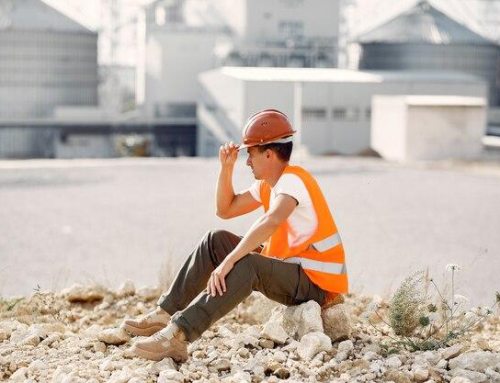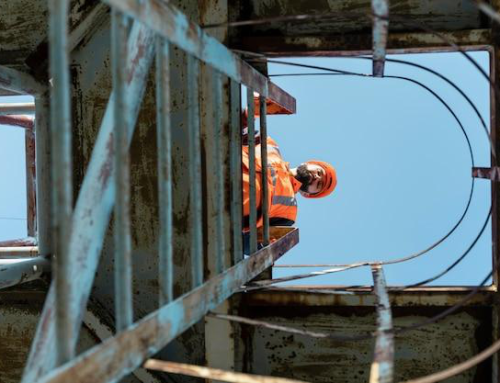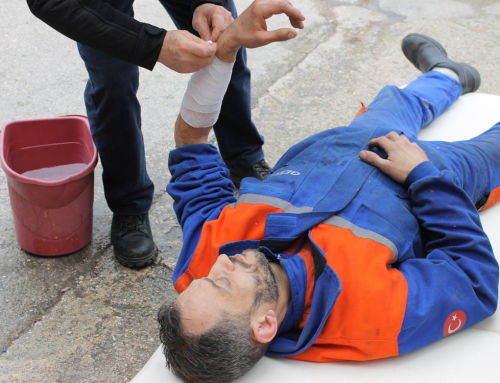In confined space operations, the standby person plays a pivotal role in ensuring the safety and well-being of workers entering hazardous environments. Their duties encompass a wide range of responsibilities, from monitoring entrants’ activities to implementing safety protocols and coordinating emergency response efforts.
In this blog, we’ll delve into the essential duties of a confined space standby person, highlighting the importance of their role in maintaining a safe work environment.
1. Preparing for Entry
Before any worker enters a confined space, the standby person must ensure that all necessary precautions have been taken to mitigate potential risks. This includes thoroughly assessing the confined space and identifying any hazards present. By understanding the specific hazards and risks associated with the confined space, the standby person can develop an effective safety plan tailored to the situation.
2. Monitoring Entrants
One of the primary responsibilities of the standby person is to continuously monitor the activities of workers inside the confined space. This involves maintaining communication with entrants, either verbally or through electronic devices, to ensure their safety and well-being. The standby person must remain vigilant for any signs of distress or injury and be prepared to initiate emergency response procedures if necessary.
3. Implementing Safety Protocols
The standby person is responsible for implementing and enforcing safety protocols to minimize risks associated with confined space entry. This includes verifying that all necessary permits and authorizations are in place before entry, ensuring that proper ventilation and atmospheric monitoring equipment are functioning correctly, and confirming that lockout/tagout procedures have been implemented to control hazardous energy sources.
4. Conducting Atmospheric Testing
A critical aspect of the standby person’s role is conducting atmospheric testing to assess the air quality inside the confined space. Using gas detection equipment, the standby person must regularly monitor oxygen levels and the presence of toxic gases or flammable vapors. By conducting thorough atmospheric testing, the standby person can identify potential hazards and take appropriate measures to ensure the safety of entrants.
5. Coordinating Rescue Efforts
In the event of an emergency, the standby person plays a vital role in coordinating rescue efforts and ensuring the safe extraction of entrants from the confined space. This may involve communicating with external emergency services, deploying rescue equipment, and assisting with evacuation procedures. The standby person must be prepared to act quickly and decisively to minimize the risk of injury or fatality during a rescue operation.
6. Providing First Aid and Medical Assistance
In addition to monitoring entrants’ activities, the standby person must be trained to provide first aid and medical assistance if needed. This includes assessing injuries or illnesses, administering basic first aid treatments, and coordinating with medical personnel to provide further care as necessary. Having a standby person with occupational first aid level 1, 2, and 3 certification can significantly enhance the safety and well-being of workers in confined spaces.
7. Documentation and Reporting
The standby person must maintain detailed documentation of all activities and observations throughout the confined space entry process. This includes recording atmospheric test results, documenting any safety incidents or near misses, and maintaining accurate records of equipment inspections and maintenance. Proper documentation is essential for identifying areas for improvement and ensuring compliance with regulatory requirements.
8. Equipment Inspection and Maintenance
The standby person is responsible for inspecting and maintaining all equipment used in confined space operations to ensure its proper functioning and reliability. This includes conducting regular inspections of respiratory protection devices, gas detection equipment, communication devices, and rescue equipment. By performing thorough equipment checks and addressing any issues promptly, the standby person helps prevent equipment failures that could compromise worker safety.
9. Hazard Identification and Risk Assessment
Before entry into a confined space, the standby person must conduct a comprehensive hazard identification and risk assessment to identify potential dangers and develop appropriate control measures.
Our confined space safety courses in Surrey evaluate the physical layout of the confined space, identify potential atmospheric hazards, and assess the presence of hazardous materials or energy sources. By identifying and mitigating hazards proactively, the standby person helps minimize risks to entrants and ensures a safer work environment.
10. Communication and Coordination
Effective communication is essential for ensuring the safety of workers in confined spaces, and the standby person plays a crucial role in facilitating communication and coordination efforts. This includes maintaining constant communication with entrants and attendants, as well as coordinating with external emergency responders if necessary.
The standby person must also ensure that clear communication protocols are established and followed to prevent misunderstandings and ensure a coordinated response in the event of an emergency.
11. Training and Mentoring
The standby person is responsible for guiding and mentoring entrants and other personnel involved in confined space operations. This includes ensuring that all workers receive adequate confined space safety training on safety procedures, equipment usage, and emergency response protocols. By sharing their knowledge and experience, the standby person helps empower entrants to make informed decisions and respond effectively to potential hazards.
12. Continuous Improvement
The standby person plays a key role in promoting a culture of continuous improvement in confined space safety practices. This involves conducting regular reviews and evaluations of confined space entry procedures, identifying areas for improvement, and implementing corrective actions as needed.
By actively seeking feedback from entrants, attendants, and other stakeholders, the standby person helps drive ongoing improvements in safety performance and ensures that confined space operations remain in compliance with regulatory requirements.
Hazard Classification in Confined Spaces
Confined spaces harbor numerous hazards that jeopardize the well-being of workers. Familiarizing oneself with these hazards and their classifications is indispensable for proficient risk management and hazard alleviation in confined space endeavors.
Physical Hazards: Confined spaces often feature restricted movement, confined access and egress points, and sharp edges or protruding objects, which heighten the likelihood of injuries such as cuts, bruises, or crush injuries to workers. Through diligent hazard assessments and the implementation of control measures like barricades or padding, standby persons play a pivotal role in minimizing the risk of physical harm in confined spaces.
Atmospheric Hazards: Among the most prevalent and perilous hazards in confined spaces are atmospheric hazards, such as low oxygen levels, toxic gases, or flammable vapors. Standby persons are instrumental in monitoring atmospheric conditions using gas detection equipment and conducting thorough atmospheric testing before and during confined space entry. By promptly identifying and addressing atmospheric hazards, standby persons ensure that entrants operate safely in confined spaces without exposure to hazardous gases or oxygen deficiency.
Biological Hazards: Certain confined spaces may harbor biological hazards like mold, bacteria, or other pathogens, posing health risks to workers. Standby persons must remain cognizant of these hazards and take necessary precautions, including wearing personal protective equipment (PPE) and implementing stringent decontamination procedures post-exit from the confined space. By adhering to rigorous hygiene practices and disinfection protocols, standby persons mitigate the spread of biological contaminants, safeguarding the health of workers.
Chemical Hazards: Confined spaces may contain chemical hazards in the form of hazardous substances, solvents, or cleaning agents capable of causing skin irritation, respiratory issues, or other adverse health effects. Standby persons must possess comprehensive knowledge of the types of chemicals present in confined spaces and their associated health risks. Through the implementation of control measures like ventilation, chemical monitoring, and proper handling procedures, standby persons minimize the risk of chemical exposure, ensuring worker safety.
Psychological Hazards: Working in confined spaces can induce psychological hazards such as claustrophobia, anxiety, or stress due to the confined and potentially perilous environment. Standby persons must exhibit attentiveness to the psychological well-being of entrants, providing support and reassurance when necessary. By fostering a supportive and encouraging work environment, standby persons alleviate the psychological impact of confined space work, promoting mental health and well-being among workers.
Ready to prioritize safety in your workplace? Join Metro Safety Training today and equip yourself with the essential skills and knowledge to ensure a safe working environment. Visit our website to explore our wide range of safety training courses and take the first step towards a safer tomorrow.
Contact us now to schedule your training session and invest in the well-being of your team. Together, let’s make safety a top priority.











